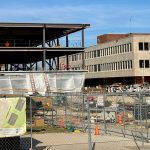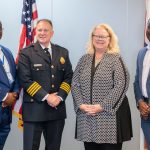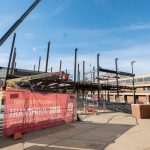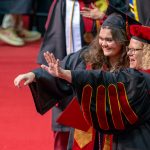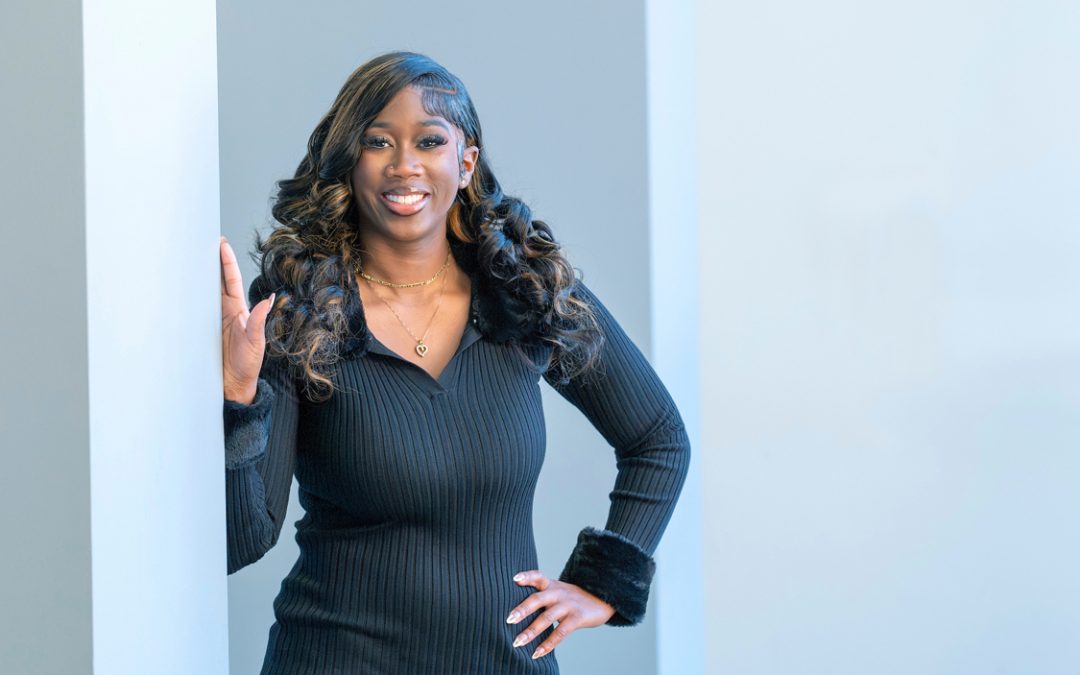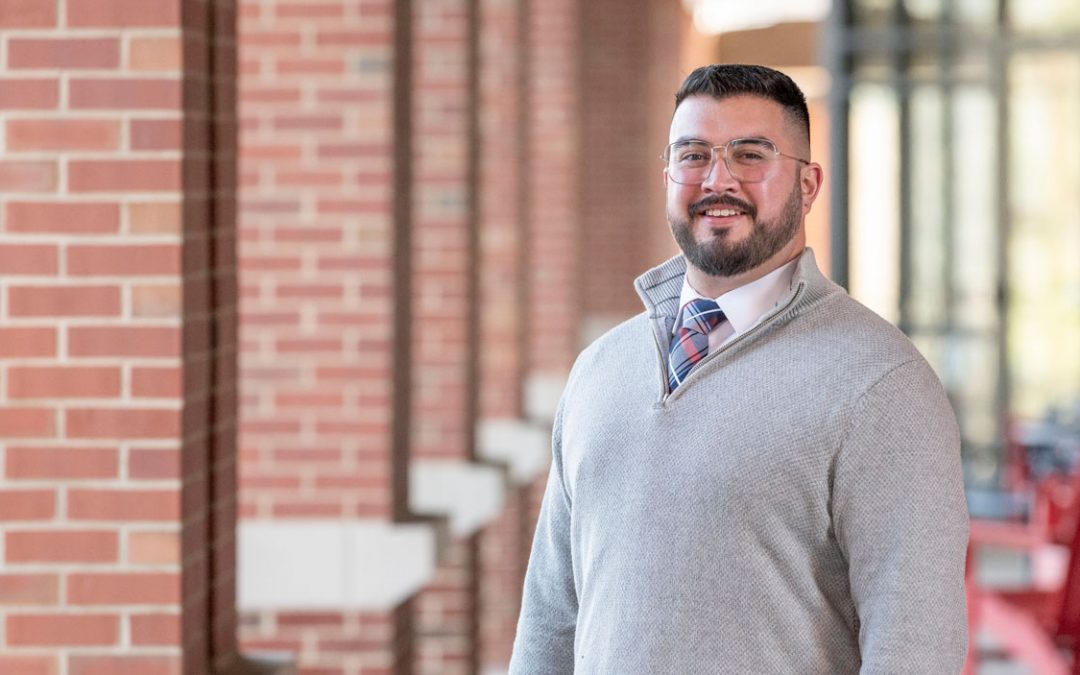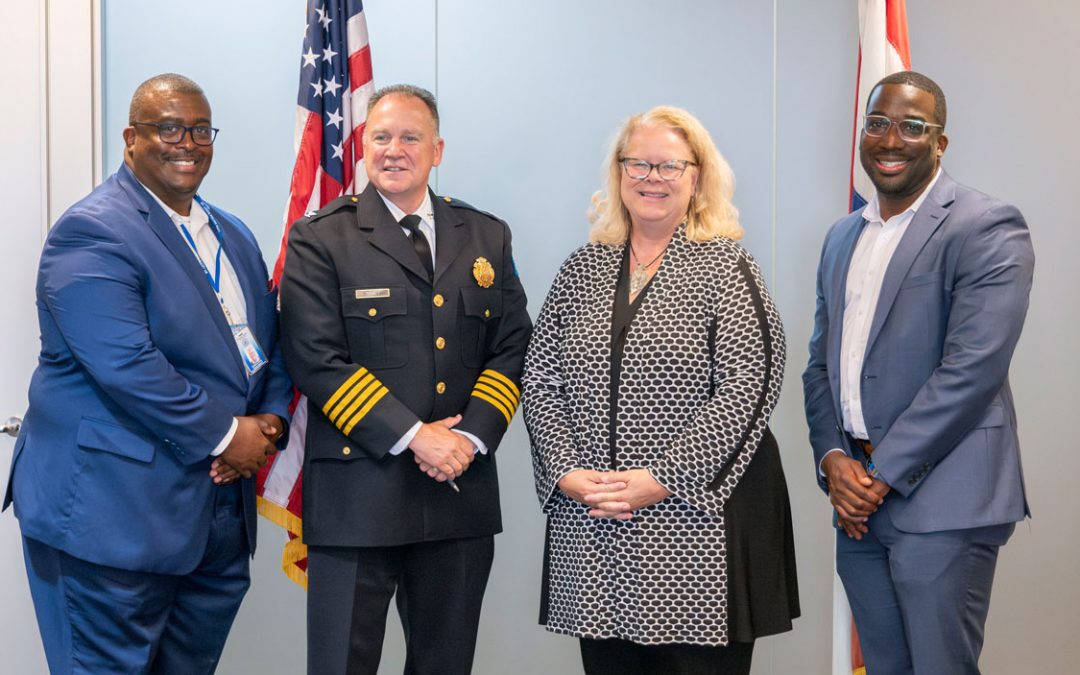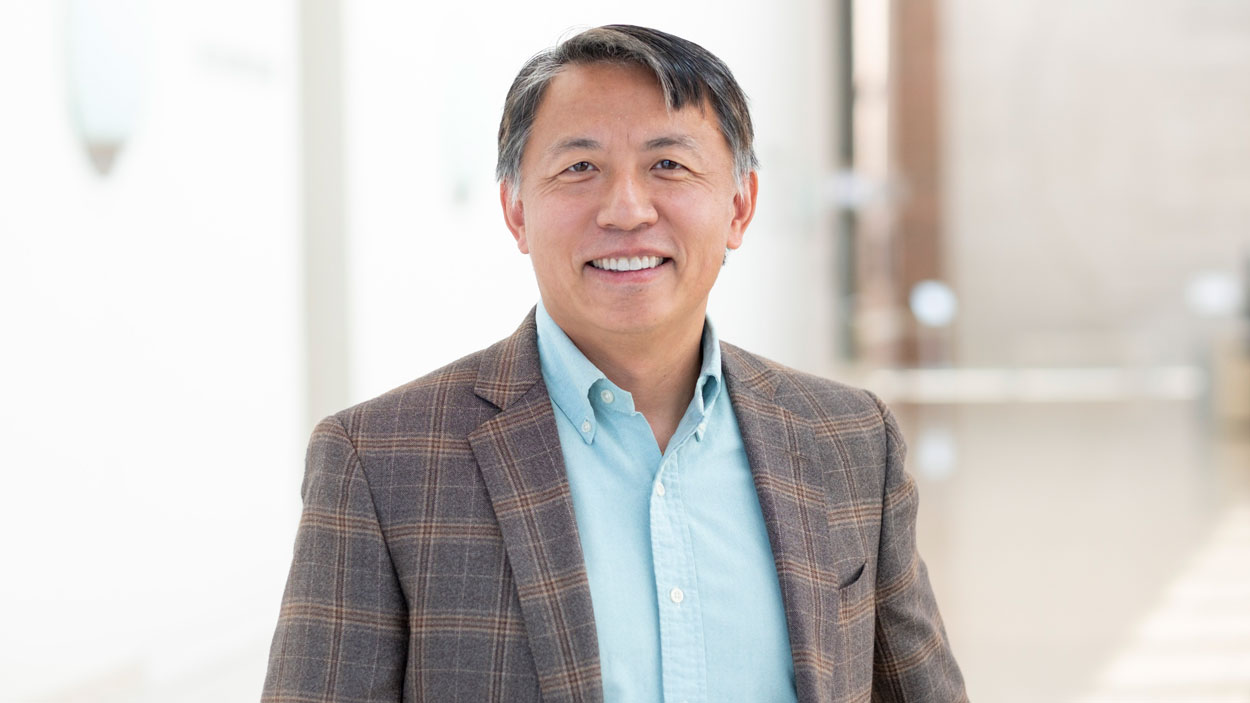
Department chair Haitao Li is the principal investigator for UMSL on the Mid-America Transportation Center for Transportation Safety and Equity grant. (Photo by August Jennewein)
The Department of Supply Chain and Analytics at the University of Missouri–St. Louis is preparing to enter its second year of work on a five-year, $5 million research grant from the University Transportation Center, which is funded by the U.S. Department of Transportation.
UMSL faculty members are part of the Region 7 consortium, working on a grant titled the Mid-America Transportation Center for Transportation Safety and Equity. They are working alongside colleagues from lead institution University of Nebraska–Lincoln, as well as the University of Iowa, the University of Kansas, Missouri University of Science and Technology and Nebraska Indian Community College.
“I’m really excited that UMSL’s supply chain analytics department is able to be part of this consortium, bringing our expertise from the supply chain side and analytics, our use of data,” said Haitao Li, the department chair. “We have a very strong, vibrant and energetic faculty who participate in this research.”
Li is the principal investigator representing UMSL. He’s joined on the project by faculty members James Campbell, Shakiba Enayati, Temidayo Akenroye, Trilce Encarnación and Andrea Hupman, along with several PhD and master’s students. UMSL’s portion has four primary themes: optimal design of inland waterway system to enhance multimodal transportation, managing pandemic transportation and supply chain systems, rural transportation system design for omnichannel healthcare, and modern transportation systems in a connected economy.
“All these projects we’re working on are very relevant to the region of Greater St. Louis,” Li said. “These are not random topics we just want to do. They actually have a deep, timely relevance to our region, as well as significant potential economic and social impact.”
The program, which started in June 2023, consists of 15 different UTCs across the country, five classified as national and 10 classified as regional. They received a total of 34 grants worth $435 million. The Region 7 center’s primary focus falls under the umbrella of promoting safety in transportation, with each university tackling different elements.
“The strategic focus of our consortium is actually broader than just safety and equity,” Li said. “We are also addressing transportation system resilience, modern technology, economic development, profitability, economic sustainability, environmental sustainability and all these very relevant topics.”
Here’s a closer look at UMSL’s four themes/projects:
Optimal Design of Inland Waterway System to Enhance Multimodal Transportation
One of the objectives of this research is to show the benefits of utilizing navigable waterways for freight transportation, both from a cost perspective and also showing how waterways could loosen some of the reliance on interstate highways for shipping certain items.
“The use of barge transportation in our country has really lagged behind when compared to places like the Rhine River system in Europe, and perhaps in China as well,” Li said. “When we call for more infrastructure investments, how can we show to the industry the potential advantage and the need of using barges? There are certainly advantages; low costs, large quantity. But on the other hand, it’s slower, and sometimes you have to coordinate with other transportation modes.”
Encarnación is heading up the research for this project.
“In Missouri, particularly St. Louis, we’re just extremely well-positioned geographically, a key part of the whole system,” Encarnación said. “In our first year, we’ve interviewed a lot of stakeholders. We want to really look at the challenges and opportunities of developing the inland waterway system. We know that we have that great system, but it’s currently under-utilized. The overwhelming majority of United States freight is transported by truck. Trucks are great, they provide great flexibility and efficiency of time. That’s what made our supply chain be so fast.”
Encarnación notes that the United States has 25,000 miles of navigable waterways – big rivers like the Mississippi River, Missouri River and Ohio River – and those waterways could ease the burden on the interstate highway system, particularly for items like automobiles where time isn’t necessarily of the essence. UMSL’s Supply Chain department has previously studied this topic in conjunction with Bi-State Development.
“There is an opportunity for us to shift some of the freight that’s currently moving via truck to the waterway,” Encarnación said. “The truck has more environmental impact, more impact on infrastructure. Some things could be a lot more affordable if moved through the waterway. That’s what we’re looking at. How can we increase our usage of this infrastructure that we already have?”
Reestablishing waterways as a reliable mode of freight transportation can also help increase resilience, should anything happen to disrupt the interstate system. A backup plan, if you will.
“A resilience,” Encarnación said, “is defined as the ability of a system to go back to its original state after a disruption.”
Managing Pandemic Transportation and Supply Chain Systems
This theme is also about increased resilience. For many Americans, the first time they heard “supply chain” was during the COVID-19 pandemic, when complications across the world caused delays of weeks and months, in almost every industry.
Hupman and Enayati are leading this project.
“This will address how we can make our supply chain better designed,” Li said. “When I say design and operation, one thing I mean is being proactive, actually going beyond just reaction. Is reaction important? Yes. It’s very important. What happened? When the pandemic hits, what do we do? But I like to go beyond that.”
The supply chain issues during the pandemic were, essentially, one giant disastrous case study.
“With all these lessons learned, how can we better be prepared for the next time another disruption such as the pandemic hits?” Li said. “I hope that doesn’t come up, by the way, but it doesn’t mean we cannot be prepared. It was devastating, impacting multiple industries, multiple sectors, both nationally and internationally. That’s a very big topic.”
Rural Transportation System Design for Omnichannel Healthcare
In rural areas across the United States, access to medical care can be problematic, with the nearest hospital or clinic sometimes hours away. This project, run by Campbell, Enayati and Akenroye, is exploring how access can be improved, particularly with the use of strategically placed telehealth kiosks/booths (TKBs) in underserved areas.
The TKBs are equipped with comprehensive digital and medical technologies, using artificial intelligence and other digital tools to offer a wide range of healthcare services, including diagnosis, screening, preventive care and treatment.
“The research includes conducting a survey to gauge public acceptance and preferences, developing case studies in rural Missouri to assess current healthcare infrastructure, and the development of mathematical models to optimize the placement and utilization of TKBs,” Enayati said.
The group is also exploring how drones can factor into the equation.
“For remote locations, integrating drone technology to deliver medicines and collect lab samples could further enhance the functionality of TKBs, ensuring comprehensive healthcare coverage across rural areas,” Enayati said.
Modern Transportation Systems in a Connected Economy
“This topic focuses on the use of new, advanced technology to improve modern transportation and supply chain,” said Li, who is the primary researcher on this project. “By ‘new technology’ the idea is very broad. We can think of the use of sensors, the use of Internet of Things – the so-called IoT – where everything can be connected by information technology, 3D printing, the use of drones and more.”
His first-year focus was primarily in the advanced manufacturing area, particularly the idea of distributed manufacturing. Traditional wisdom in manufacturing is to achieve economy of scale because when scale increases, marginal costs go down.
“In distributed manufacturing, it’s almost like the opposite, because the idea is that manufacturing can now be done in smaller batches,” Li said. “Why smaller batch? Because the advantage is you can be more flexible, more personalized, like with so-called precision medicine. In 3D printing, printing jobs can be done in other places, in small batches depending on the needs. The distributed manufacturer has the potential to increase the flexibility of manufacturing, so the product can be more easily customized to customer needs while still achieving large quantity.”
Li has focused on finding a way to coordinate the distributed manufacturing facilities while still having a centralized parent company that coordinates the production and planning.



